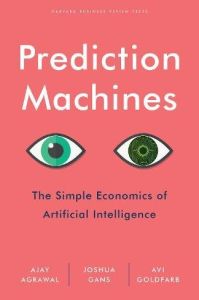Professors at the University of Toronto Rotman School of Management Ajay Agrawal, Joshua Gans and Avi Goldfarb – international leaders in artificial intelligence (AI) and data science – team up to offer a unique, no-nonsense view of AI through the lens of economics. They focus on one of AI’s key features: making predictions. The costs of its predictions fall continuously as their quality improves. This results in more predictions for more things, which, the authors contend, devalues human predictors. So far, they emphasize, AI can make only routine decisions. Thus, those who turn AI predictions into worthy decisions become increasingly valuable. In terms of decisions about AI itself, the authors explore what firms and nations might do, including the extent to which they should embrace AI.
Forbes.com named this one of the Top Ten Technology Books of 2018. Robert E. Rubin, former US Treasury Secretary, found it to be “…a readily understandable guide to artificial intelligence and the immensely consequential effects it could have on our economy, our society and our political system.” Executive editor of Wired, Kevin Kelly, cut to the chase when he wrote the authors made, “… artificial intelligence easier to understand by recasting it as a new, cheap commodity –predictions.” Agrawal, Gans and Goldfarb focus, as per their title, on predictions, the fields that demand them, their cost relative to human or AI labor, and how the price of those predictions will drop as AI becomes ubiquitous.



















Comment on this review